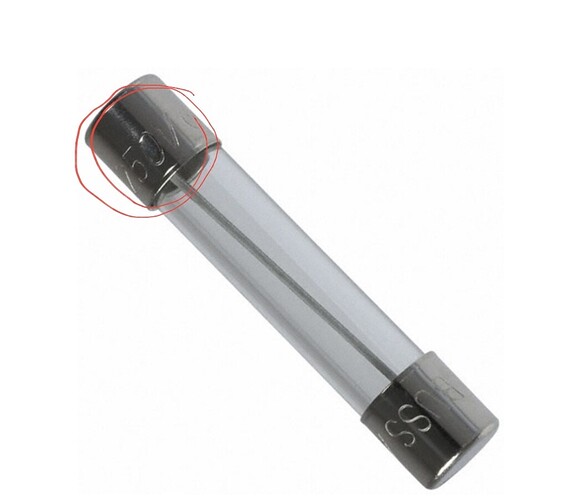I am looking for an after market power supply. Amazon has one that has the spec’s (48v 10a). Will this one work?
I’m curious to why. Are you powering other devices (I.O.T, contactors etc.)? The standard power supply for the SLB is rated at 12.5 amps at 24v. This power supply would leave you with another 7.5 amps at 24v.
The question was in regard to a power supply for an Altmill. I believe the Altmill uses 48V and not 24V.
Edit: As per Sienci web site:
Q: What are the power requirements for the AltMill?
The AltMill comes with a 48V10A power supply, which can supply 500 watts of power. Users should dedicate additional power based on the spindle they choose to use, which can range from 1.5KW and above. This may require having two or three available breakers, or 220V available for your spindle.
I did some digging and this is the power supply I would recommend
https://www.digikey.ca/en/products/detail/mean-well-usa-inc/SE-600-48/7706618
Mean Well power supplies are highly regarded. Retail price is $145 CAD. I would specifically warn you not to purchase it from Amazon or any other supplier that is not an authorized dealer. China is pretty darn good at cloning things and a power supply I purchased from Amazon looked identical to a Mean Well supply. Only when I opened it up did I realize it was not in fact a Mean Well Supply.
Digikey sells only brand name equipment so if you buy a Mean Well supply you actually get a Mean Well supply. Freight is free (over $100). If you are in the USA, Digikey has offices there too.
Oh, I recommend a 600W supply for a little bit of extra head room.
Yes, it’s more than 3 times the price but you get what you pay for and Mean Well is a premium product.
I looked through the altmill documentation before I responded looking for the specs on it’s power supply and didn’t see it. Didn’t dive into the FAQ though. Assumed the SLB-Ext was the same as the SLB. You know what they say about assuming. Nevermind.
For the first comment. I am not looking to power other electronics. The Altmill power supply is a 48 volt 10 amp and 480 watts power supply. Mine went out and I didn’t see one for sell on their website. The SLB is only a 24 volt power supply.
Give Sienci a shout. There is no way that they don’t have a replacement available.
I cleaned out the silicone or what ever this stuff is from the original power supply and noticed a glass part that looks like a diode of some sort. Anyone know what this is and the values of the part? I don’t think I broke it because I was very careful around the components. I think this is the only reason it quit working.
Looking at the picture, there is a notation on the PCB that says “F1”. Usually this would be a fuse. I should stress though that this is a wild guess on my part. It could be for a component on this side or the other side. I can’t quite make out the other lettering but if I was to guess I would say 10A/250V.
I have no clue what the component is just above the ‘250V’ nor do I recognize what appears to be a small metal can just above the white wire.
Now here is a WAG: It could have been a fuse and half of it is the bit above the ‘250V’ with the other part (above the white wire) being the other end of the fuse and the glass part in the middle between the two ends is broken and missing.
There are a lot of guesses in this answer so don’t depend on this !!!
A fuse is what I would have guessed too.
I think those are the two ends of the “fuse”
Hi James,
@Jens is right at it being a fuse. It is a glass tube.. was a glass tube with a conductive wire that is ment to burn out inside the glass tube when the amperage conducting through the wire exeeds a certain value. Normaly these fuses are held in some kind of housing where is is kept in place on conductors making it easy to replace. This one however seems directly mounted on the pcb, needing it to be desoldered from the board before a new one can be placed. That is a highly unusual configuration on consumer graded boards. I’ve seen fuses mounted directly on boards but they are mostly smd components.
Anyhooo, to replace this one you need a solder iron (not the pistol kind) and a leaded glas tube fuse with the right value. Since Jens couldn’t make out the value from the pcb, as can‘t I. The only way to get the value is to read the top metal part of the fuse where I can just make out an “A” stamped on the side. The amperage needed will be stamped just before the visible A. There are two kinds of these fuses, being a fast or slow blow version. It wont hurt to go with the slow blowing one.
The cost of these fuses is not high, but you might find you end up having to purchage a pack of them.
Here’s an exemp on how to find these compoments.
Please note that this value is a guess, you need to look up the value you need on the components metal parts.
Edit to insert a picture on finding the value: 250V/(unknown amperage)A
I believe the fuse is one with solder tails. A short (maybe 1”) wire that is soldered to each cap. To save space, a lot of times these are placed upright (like in this case) with one end of the fuse sitting on the PCB. The fuse itself is not soldered to the board. Instead, the wire from the fuse is soldered to the through hole on the other side of the pcb. The wire on the other side of the fuse is inserted in the appropriate hole and soldered from the back side as well (note that the procedure is to first roughly form the wire, then insert both wires and finally solder both wires on the other side of the PCB).
Although it is probably fine to use a slow blow fuse, I would suggest to use whatever is specified instead of hoping that a slow blow will be ok.
Thank you all for your help. I have dealt with components replacement before. I am not an electronics guy. I do have some common sense. I do have an adjustable pencil soldering iron. I have to do some more digging around to get the PCB out of the metal box in order to get to the underside. I was thinking that was all there was to it but why didn’t they (Sienci) make it easer to change. I had to dig tons of silicon, or {what ever this stuff is) out of this to even get to where I could even see any of the components. I don’t think they wanted anyone to work on them. I think they wanted everyone to buy a new one. They are probably over $200. The 24v for the longmill is $165.Thanks again for all your help.
It is extremely common for external power adapters to be ‘potted’. You are lucky it was just silicon. A lot of times the potting compound is epoxy.
There is no grand conspiracy on the part of Sienci!
One thing that wasn’t mentioned in all of this is the possibility that the fuse was just fine before you broke the glass. It is also possible that the fuse was blown but generally fuses don’t go ‘poof’ without a reason. Sure, replace the fuse …. but don’t be surprised if the replacement fails as well (or the supply still not working) indicating a failure someplace else in the power supply.
Lastly, switching power supplies are not something that is easily fixed and the chances of doing so without a schematic are close to zero unless you fix switching supplies for a living. I would prepare myself for the eventuality of having to replace the power supply.
The power supply that you were asking about and the supply I suggested are both not potted because they are meant to be installed in an enclosure, unlike the supply from Sienci.
I just got an email from Sienci. They are replacing my power supply. I am surprised since it is out of warranty. I have nothing but good things to say about Sienci and everyone there.
Power is power, but I would buy a Meanwell made supply. Few more bucks but super solid manufacturer.
Sienci is sending me a new one. I am surprised because it is out of warranty.
I did replace the fuse and it didn’t help. You are correct in your assumption about something else being the problem.
That is a 10 amp 250v fuse. Fuses blow for a reason. The most common is if there is some kind of short. Otherwise if for some reason there is too much current draw for the fuse rating. I always look on the bottom of the circuit board to look for obvious burn or dark spots. Then look at the top for any burnt parts. Probably the most common would be the full wave rectifier that produces the DC voltage on the front end.


